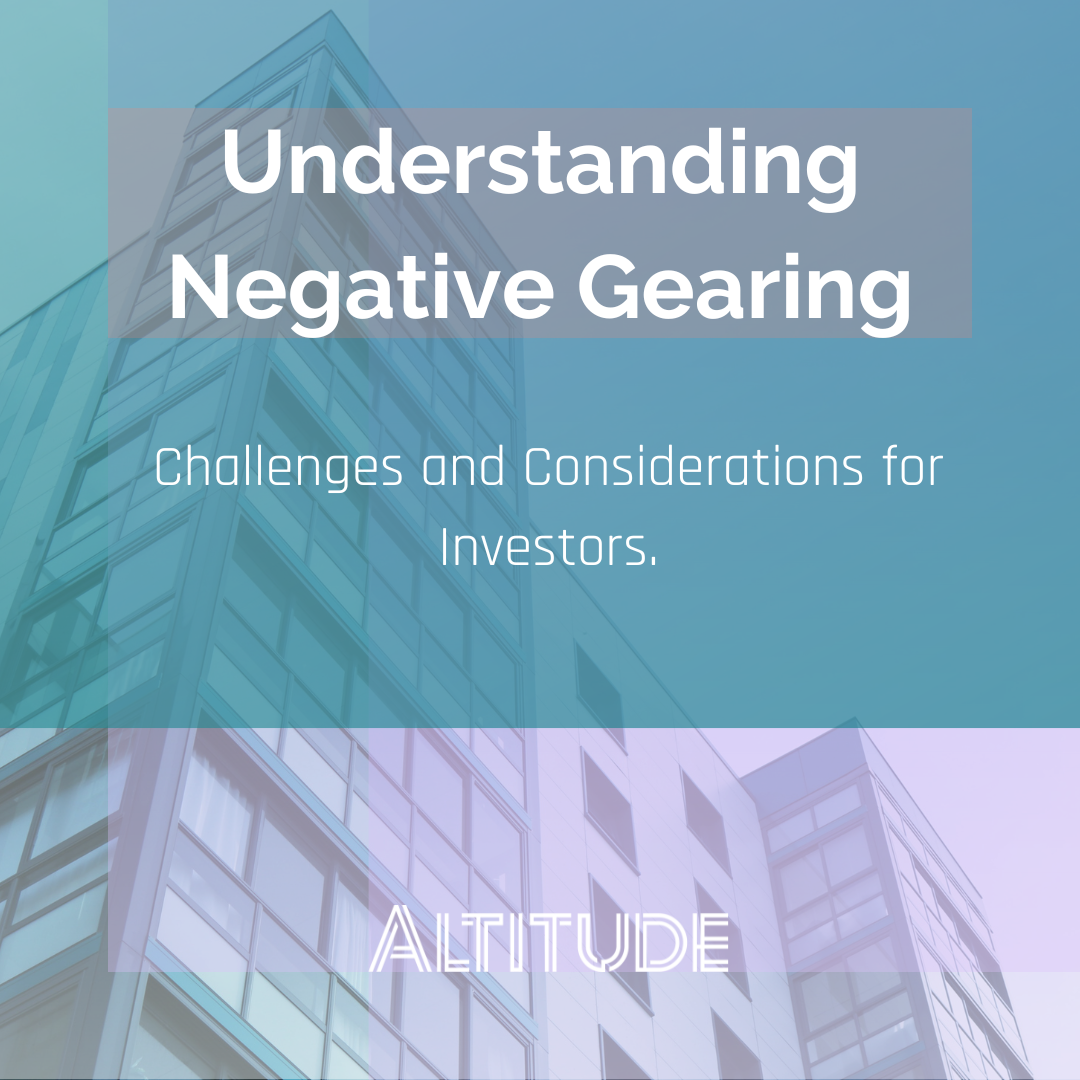
Entering the property market offers investors a platform for potential financial growth and portfolio diversification that can aid in achieving financial freedom sooner. Negative Gearing is a widely discussed yet sometimes misunderstood strategy that has sparked an ongoing debate on its effectiveness. We take a deeper look into the approach to judge its benefits and drawbacks as a possible investment strategy.
What is Negative Gearing?
Negative Gearing occurs when an investor borrows funds to purchase an asset which incurs expenses that exceed the income generated by that asset. In the context of property, this strategy could involve purchasing a residential dwelling which bears holding costs (e.g. mortgage interest and home repairs) that exceed the rental income generated from occupants of the unit. The cashflow deficit produced by a Negative Gearing approach may allow investors to reap taxation benefits alongside the potential for asset appreciation and positive cashflow generation in the long run.
While this strategy certainly has its merits, – is it necessary and appropriate for you to achieve your financial goals?
Benefits
Negative Gearing offers several potential advantages that investors often consider. One widely discussed benefit is its capacity to decrease overall tax liability by offsetting losses from the investment property against income earned from other sources. If investors are able to manage the cashflow deficit this can be a highly effective technique. Additionally, when borrowing costs decrease, this strategy becomes more appealing as potential investors can borrow more, amplifying their investment potential. As interest rates appear poised to decline at some point in the near future, a Negative Gearing strategy seems poised to become even more enticing. However, it’s essential to weigh these benefits against the potential risks and challenges associated with negative gearing.
Drawbacks & Challenges
Because Negatively Geared assets do not generate sufficient cashflow to cover the outlay investors must use external sources of income to prop up the shortfall. While the tax benefits are greater when the holding cost is recompensed via alternatively generated funds, deductions claimed on negatively geared property will not amount to the incurred expenses and as such effectively act as a discount on the realised losses. Additionally, life circumstances such as planning to start a family or entering retirement where households experience a sudden reduction in income can have significant impacts on financial stability. Under these scenarios the negative cashflow generation can cause increased financial strain and additional stress to investors. Strong consideration around financial goals and future plans are essential to ensure needless burden is avoided.
Things to Consider
Negative Gearing offers investors an effective means to utilise their excess cashflow that holds the potential to assist them in cementing a strong financial future, albeit with the risks and uncertainty associated with negative cashflow.
When considering the potential of Negative Gearing as an investment strategy, it is important to recognise that the information provided in this article is general in nature and may not fully encompass your individual circumstances. To make informed decisions aligned with your financial objectives and unique situation, we encourage you to consult with one of our professionals at Altitude Advisers.
Altitude Financial Planning is a Corporate Authorised Representative of Altitude Financial Advisers Pty Ltd
ABN 95 617 419 959
AFSL 496178
The information contained on this website is general in nature and does not take into account your personal circumstances, financial needs or objectives. Before acting on any information, you should consider the appropriateness of it and the relevant product having regard to your objectives, financial situation and needs. In particular, you should seek the appropriate financial advice and read the relevant Product Disclosure Document.


